An Agribusiness Leader Transforms into a Social Media Pacesetter
A conversation with Wendell Calhoun, Manager, Marketing Operations, Syngenta and Nicholas Love, Director, Digital Engagement Strategy
As social media reaches peak concentration of consumer attention and purchasing power, B2B companies are pivoting their strategy to become more digitally agile. Digital transformation is no longer in the future – it’s arrived, and it’s reshaping every industry.
This transformation takes a unique turn in the agricultural industry. Digital connectivity has steadily improved over the last decade, leading to a shift in how farmers access information and engage with brands. A large majority of producers fall within the Gen X age bracket, an age group that spends an average of 7 hours a week on social media, according to Nielsen Report. In fact, a 2020 Ag Media Council study on media usage reports that more than three quarters (76%) of growers use at least one social media channel. Add to this the expansion of broadband internet access in rural America, and we see that the way in which farmers are consuming and interacting with digital content is transforming, driving companies to rethink their approach to communicating with these key customer audiences.
For leading agribusiness giant Syngenta, achieving a unified voice on social media posed a unique challenge, as the company faced stiff competition for share of voice and a diversified structure and approach among its various business units. In partnership with G&S, Syngenta undertook a transformative journey on social media that saw its engagement skyrocket and its social performance shine.
We sat down with Wendell Calhoun, Marketing Operations Manager at Syngenta, and Nicholas Love, Director of Digital Engagement Strategy at G&S, to learn more about the transformation process and the success it brought to the company.
What made you realize it was time to revamp Syngenta’s social strategy?
WC: All the stars aligned regarding what I call the four Cs: our customers, our capabilities, our consumption and our competitors. We identified that our customers’ digital use was evolving and becoming more sophisticated in what they needed to grow and succeed in their business. Technology and tools had become more readily available to achieve new agronomic and marketing capabilities. Consumers within and outside our organization were ready to see Syngenta take a deeper plunge into the digital pool. Finally, we wanted to ensure we were not only competing with but also outpacing our competitors. Taking all these factors into consideration, we knew the time was right.
What was the approach to uncovering opportunities for growth and crafting a new strategy?
NL: One of the first things we did was a comprehensive social media audit. We identified key product brands across Syngenta and conducted a social media competitive audit at the brand level. With an overarching focus on gathering social intelligence, we needed to understand the share of voice at the product level, what type of sentiment was being expressed about the products, whether each brand had advocates and, if it did, who they were and what we could tell about their motivational factors.
Next, we conducted an enterprise-level social evaluation, measuring against enterprise-level competitors and their social media activity. We really went in-depth to understand the tendencies of both our client, Syngenta, and the competitive landscape it faced.
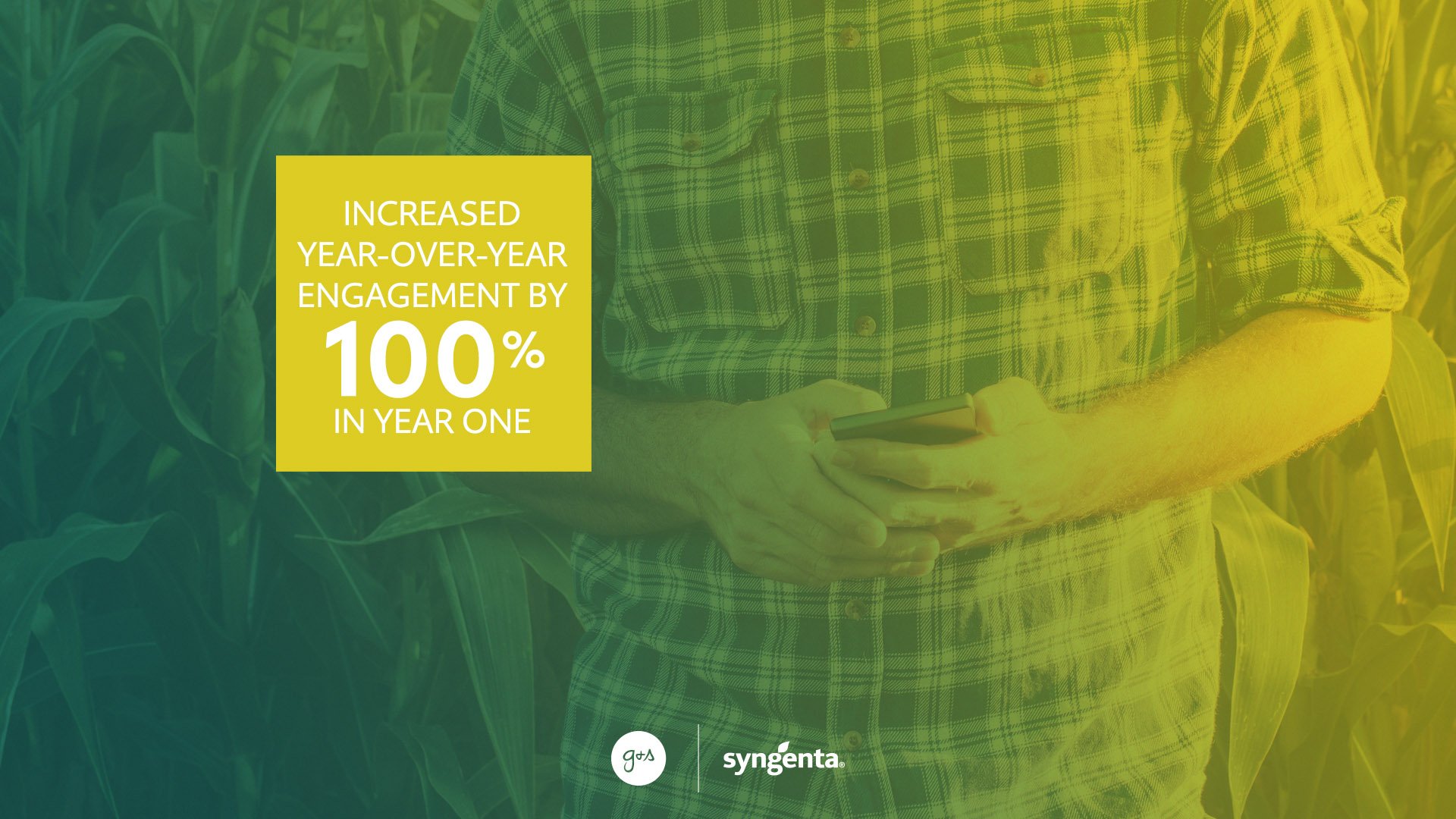
After we had a better understanding of the landscape, we turned our focus internally. We established a set of principles that would guide our approach to developing a best-in-class social media program for Syngenta. It started with examining the social media technology stack, investing in new tools like Hootsuite Impact and VidIQ to deepen tracking and categorization capabilities. As a result of the audit, we established content buckets and introduced a new measurement formula that would allow us to understand not only the effectiveness of these content buckets, but also which content types resonated with audiences the most and how that varied across multiple channels.
With the vision of creating a best-in-class program, we needed to develop a three-year roadmap that could offer us both a robust framework and an opportunity to make incremental adjustments along the way. We set a goal of increasing engagement by 10%, and we exceeded that goal by increasing year-over-year engagement by 100% in year one.
What was the primary challenge you faced aligning a new, fully integrated strategy across such a massive brand?
WC: We had two key challenges: Alignment and benchmarks. When you look at Syngenta as a whole, we have several organizations, but when you look at social media, we have one primary customer. How can we ensure our social media efforts all align simply and systematically, and we speak with a unified voice to present a consistent customer and brand experience?
First, we ensured a high degree of visibility and accountability with our social media strategy, with one organization at the forefront helping to spearhead seamless execution and working with several internal stakeholders across our organization. We had various independent goals to meet, which posed challenges, but they were challenges we met collectively and goals we exceeded universally.
Any time you take on an effort of this nature, you are not always fortunate to have the historical benchmarks to demonstrate growth. Therefore, this was a benchmark-setting year, giving us a great springboard for moving forward. Now, we have strong internal alignment and benchmarks to showcase that progression. We are working from a place of sound data and analysis to make and drive decisions that deliver.
NL: Benchmarking was one of our key goals. We needed to establish this from a platform perspective, both across content buckets – like thought leadership, news, and brand promotion – and across different media types on every channel. This allowed us to break down the different types of posting activity and evaluate our performance at a granular level as we fine-tuned how we published content.
We introduced a forecasting model to help us become even more efficient in how we approached paid activity. We encouraged a culture of testing across paid activity, seeing each touchpoint as an opportunity to get smarter about our audiences to pursue optimal results on a continuous basis. We also emphasized knowledge-sharing across the account to continue to adapt and innovate based on our findings, constantly tailoring our content strategy to our growing understanding of the audiences who were engaging with us.
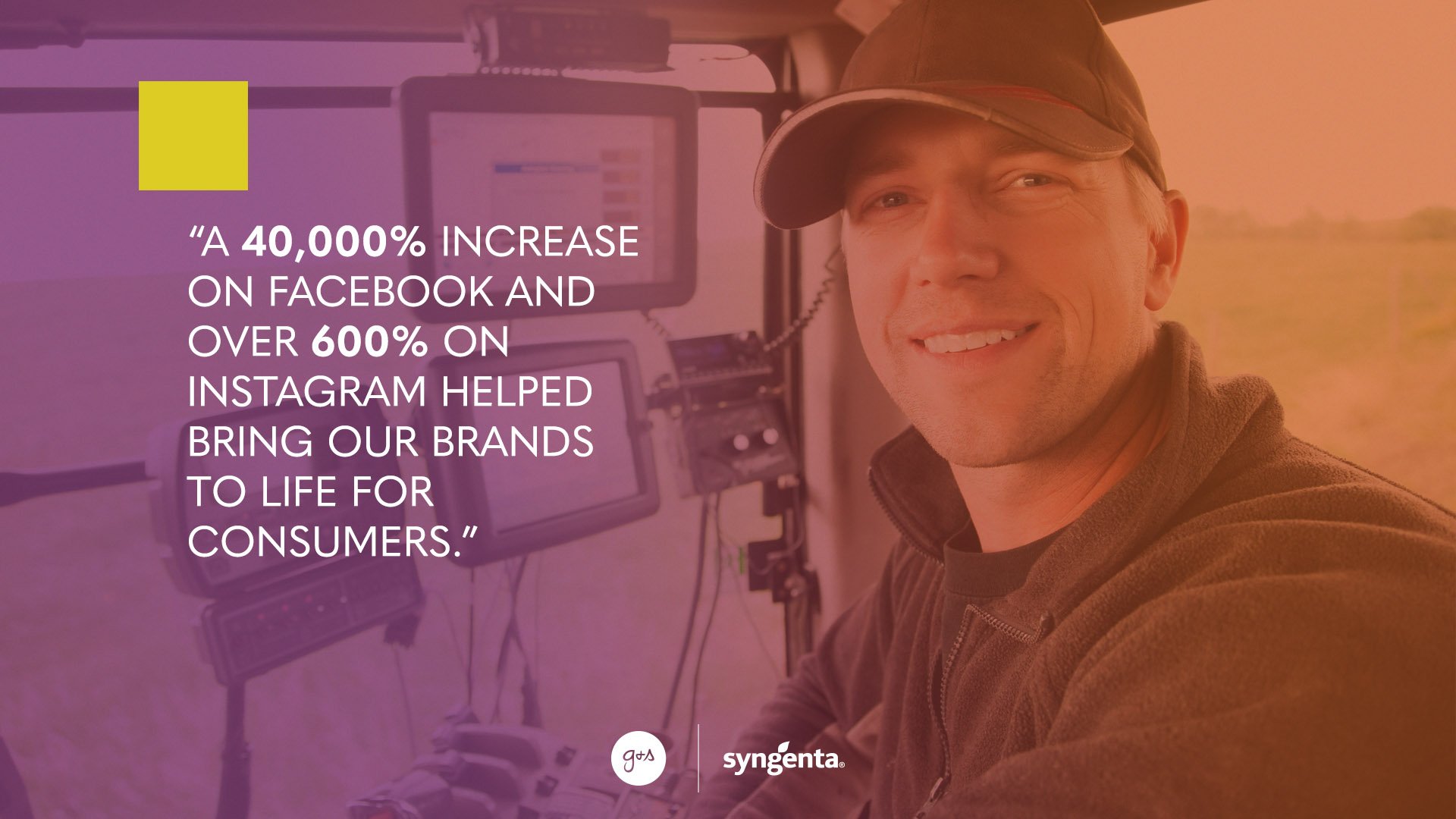
What was the biggest “aha” moment that you and the team had achieved a breakthrough?
WC: One of the most revealing aha moments was looking at the content types and buckets, as Nick just mentioned. I expected that social media audiences would consume content on brands as well as customer events and experiences, like trade shows. Historically, we’ve had an extremely strong foothold here, so that didn’t surprise me. But diving into the data and analysis of not only the consumption but also the amplification when that content is shared, I was utterly impressed by the episodic content and how that was used to tell a story that engaged – and extended beyond – our core audiences.
The thought leadership and the spirit content saw a national base, which confirmed that our brand was larger than simply our products. When we started investigating the content buckets and engagement as compared with brand and event, it told a compelling story that people wanted to know more about Syngenta, our people and who we were beyond simply the brand and the product. That was reaffirming when coupled with market research from other sources.
Were there any surprises along the way? What did you learn from the process that was unexpected?
WC: What really caught my attention was the numbers. The KPI results were phenomenal. I knew we would experience growth and make a solid mark on the industry, but we were also able to use the analyses and metrics to drive consistent, concise, surgical execution across various areas that truly added unyielding value. The transformation brought us actionable insights to do a better job not just for ourselves as Syngenta but also for our customers. We were able to better understand their current needs, forecast their future needs, and deliver the content they were seeking, packaged in a better way with an optimal content method for them to find value themselves.
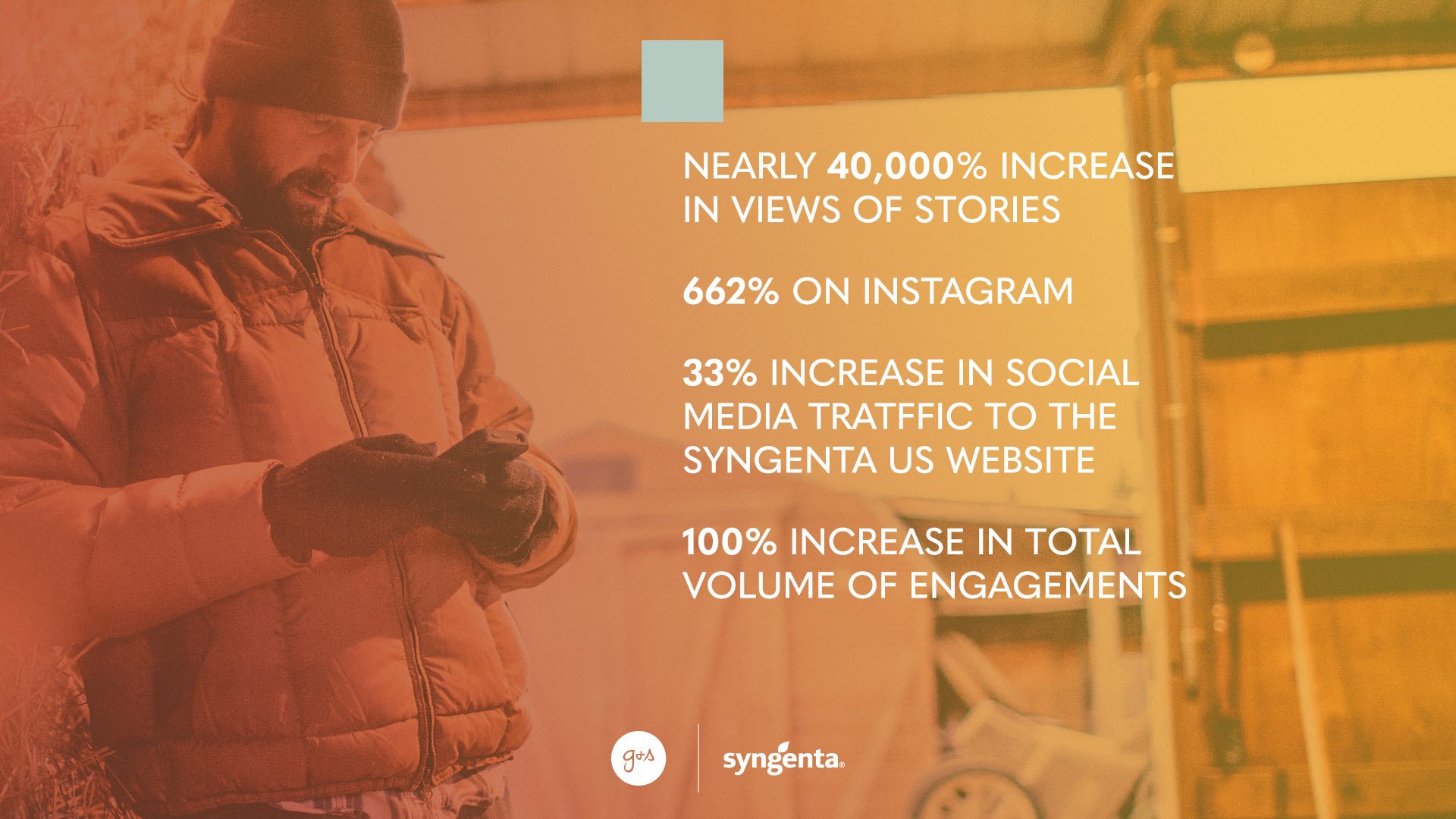
NL: A high-level audit can tend to rush through to a more pressing goal, but because we did a deeper dive, the results were astronomical. We truly revamped the entire social strategy, from the bottom up – the tools, the content categorization, the social listening and insights, and the measurement to inform our strategy. We wanted to expand the capacity for higher engagement modes and by the end of 2019, we saw a nearly 40,000% increase in views of Stories on Facebook and 662% on Instagram; a 33% increase in social media traffic to the Syngenta US website; and a 100% increase in total volume of engagements. We also increased earned mentions of the brand on Twitter, closing the gap between Syngenta and its nearest competitors in terms of share of voice on the channel.
Additionally, and perhaps more importantly for long-term growth, we introduced the new models of forecasting and measurement; emphasized the value of targeting audiences on each channel; increased the sophistication of testing; improved efficiency of ad delivery on specific platforms; and gained a more robust understanding of user behavior based on different types of content, placements and ad types. These insights are what help us continue to improve our strategy going forward.
How did you feel about the outcome of the engagement?
WC: I was immensely pleased with the results. A massive increase in content consumption on Facebook and Instagram helped bring our brands to life for consumers. It was laborious, but delivered phenomenal results, which was gratifying and inspiring. It gives us a solid platform as well as a roadmap to move forward.
As marketers and communicators, we always must tell and sell – not only to our customers but also to internal stakeholders to share the business impact and value of these investments. When we have these types of numbers and this replicable process, it provides a wealth of credence to the role we play and the financial support we receive within the organization. Because of these successes, more internal stakeholders are seeking our information and recommendations. It shows that we can provide real value to the company from business communications and marketing.
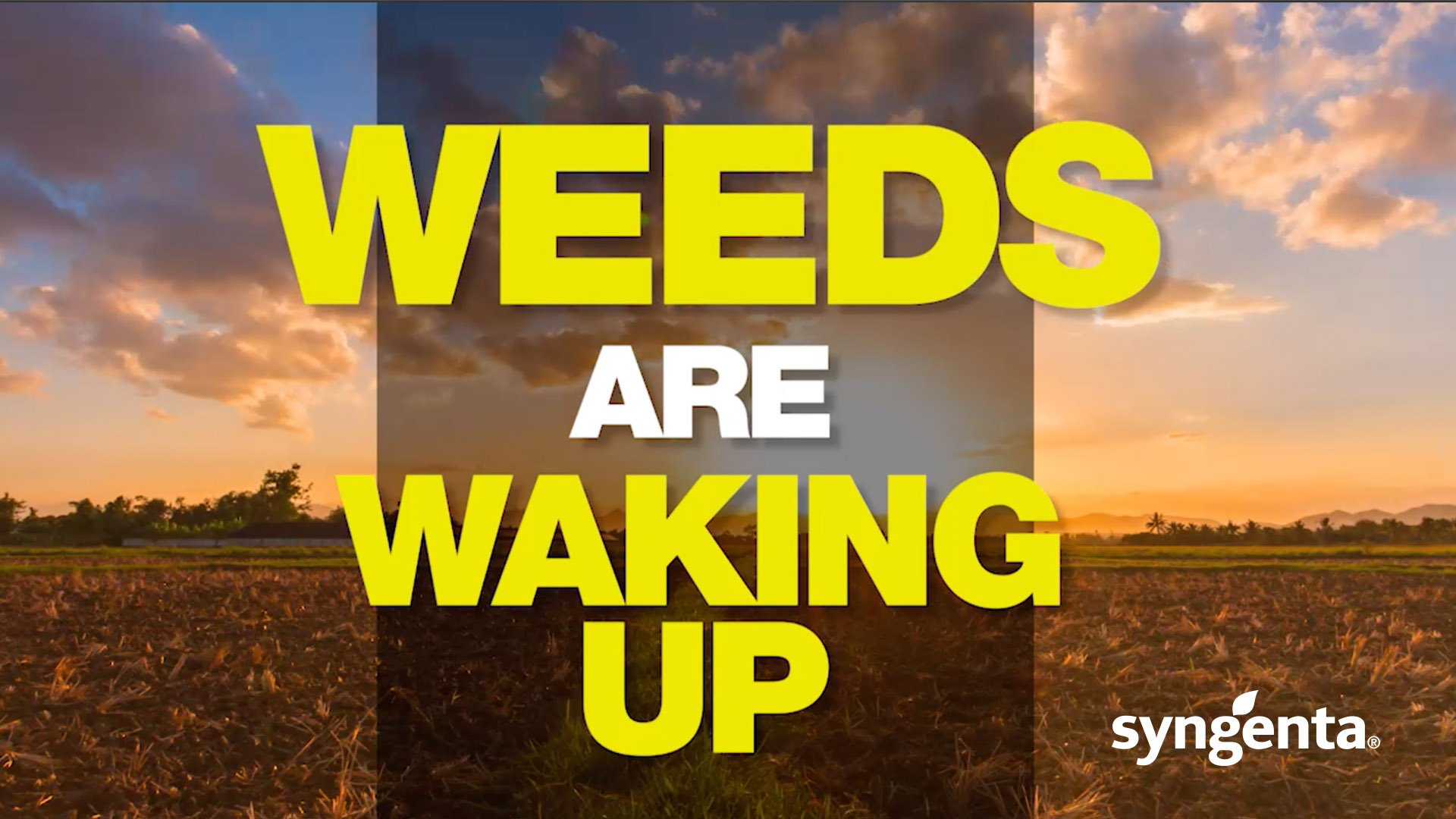
“Weeds Waking Up” was a landmark campaign that created positive momentum for Syngenta. What was your greatest measure of success?
WC: When I think about this success, I can easily speak to the numbers again, but they speak for themselves. What’s equally valuable is the opportunity to replicate this episodic content, the process and the insights used. We see this as a campaign that can be duplicated, allowing others to build on and even potentially excel. Imitation is the sincerest form of flattery; if other companies imitate this, then we can count this a sincere success.
NL: When we established the new vision, we wanted to consistently develop campaigns that built muscle memory around enhancing the experiences of our target audience so that we could continuously optimize with engagement being top of mind. In this campaign, we leveraged the insights gathered through Netbase's artificial intelligence with an episodic content series complemented by paid activity on social to deliver one of the top-performing campaigns of the year.
WC: In our social media roadmap, we focused on achieving best-in-class optimization to maximize our performance, but we also desired for our organization to be perceived as a social media-savvy expert in our industry, one that our competitors would seek to use as a measurement stick. We aspired not only to compete but also to outperform, to be regarded as the leader. This puts us in an outstanding position to be imitated by our competitors – and that’s a core goal. You know you’re leading when others are willingly following behind you.
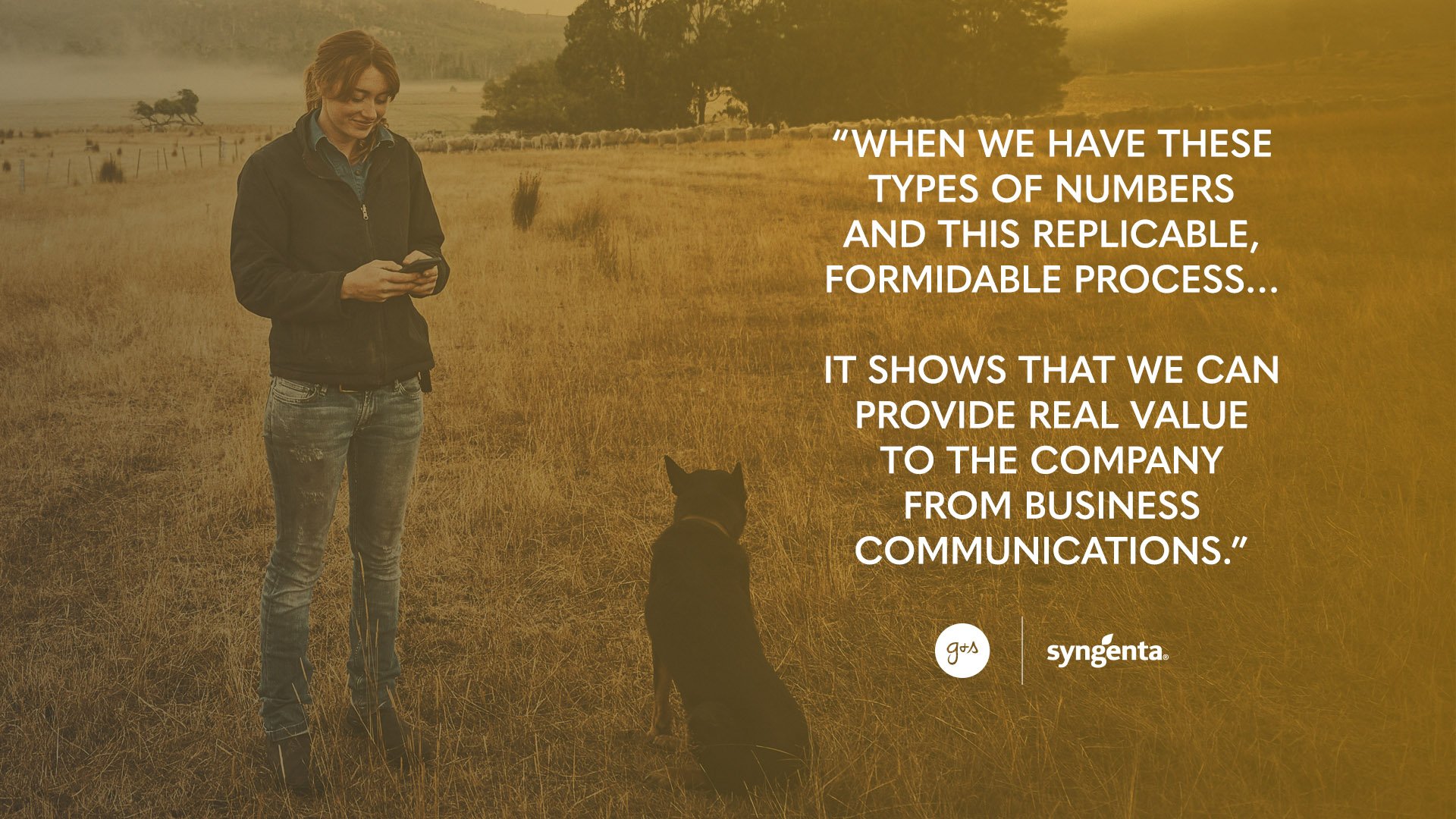
What’s the next step for you? What new milestone are you hoping to achieve with this team and this new roadmap?
WC: Our roadmap is a three-year journey of continuing to refine our process and replicate our successes. We continue to capitalize on our investments and enhance our efficiency and effectiveness with our programs, our brand launches, our social media monitoring and our personalization. We are becoming more sophisticated as an organization with our social media technology acquisitions and use of digital marketing tools , so we are striving to expand and optimize what we already have internally. We are also focused on layering those tools alongside our established benchmarks for better forecasting and analysis. What we once utilized as merely a path can now be regarded as a strong component of our transformation journey.
When we look at social media, we approach it from both the central brand messaging and thought leadership perspective and from the highly relevant, customer-focused stories of our local marketing teams. We are bolstering their stories as they boost ours, using better forecasting and analysis to expand our messaging internally and amplify externally.
Do you have any further thoughts about the engagement, your social media transformation, or the journey with Syngenta?
WC: I’d be remiss if I didn’t acknowledge the leadership and respectful challenge G&S brings to the table. The team finds areas to push us outside of our comfort zone, both inside and outside the industry, seeking opportunities that seem far off but, in a space that’s moving so quickly and dynamically, are closer than we imagine. We appreciate the partnership and look forward to continuing to work together to make an indelible mark in social media.
NL: Couldn’t have said it better myself. We appreciate Syngenta’s willingness to be a pioneer and to experiment with new approaches that the industry hasn’t necessarily seen before. Cultivating that culture of curiosity is so critical to driving innovation. We look forward to continuing to set goals and exceed expectations as we scale this program.
WC: The team continues to raise the bar, and it’s a bar that has to be raised if we are to remain relevant and competitive. We can’t rest on our laurels once we achieve success. We need to harness that excitement to fuel continued growth, constantly pursuing how we can be better, more agile, and how we can continue to chart a course for rest of the industry to follow.